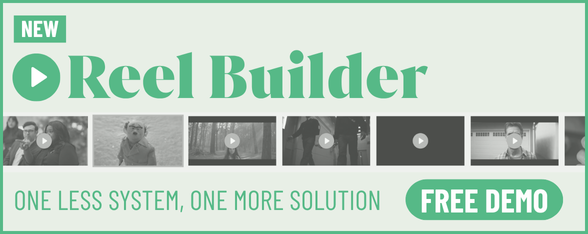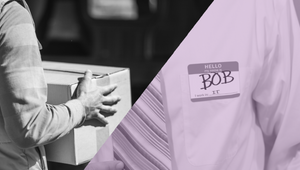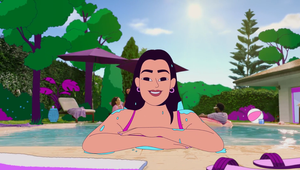
Dan Good on the Creative Challenges of Editing

Starting his career in Soho as a runner in 2007, Dan Good is now OLIVER’s senior creative editor, having first been at McCann London, Spark44, and Krow London.
He has specialised in short form editing over his career and has cut broadcast work for some of the world’s most well-known brands including Microsoft Xbox at McCann, Jaguar Land Rover at Spark44, and Ferrero at Krow London.
He brings both sides of editing to the table; the offline storytelling as well and the online craft which is needed in today’s advertising world.
LBB> The first cut is the deepest: how do you like to start an editing project?
Dan> I start by having a talk with the creatives on where they want to go with this edit, what type of feeling they are after and look through any references to make sure everyone is on the same page on where we hope to take the edit.
I’ll have a quick look at the storyboard to know the basic information, main scenes, duration, script, but I prefer as fresh of a look at the rushes as possible and get straight into making selects, concentrating more on finding the tone the creatives are looking for.
If I’m working with a director I’ll take a lot more time at the beginning with the storyboards and structure to make sure I get the first director’s cut edit into a place they are happy with.
Project-wise, I keep it as simple as possible, one selects a timeline with the shots laid out in the order they were filmed, start at the beginning and work my way through the shoot days.
LBB> Non-editors often think of editing just in technical terms but it’s integral to the emotion and mood of a film. How did you develop that side of your craft?
Dan> I think it’s developed through lots of practice and the experience of trying different things, eventually learning what works and why. It’s something that you develop instincts for over time, what choices to use and when, pushing the emotion to where you want it. You accumulate a bag of tricks up your sleeve to pull out when needed, but often you learn what doesn’t work and what to avoid trying as much as you do what does.
LBB> How important is an understanding of the story and its mechanics?
Dan> The story is everything. That doesn’t always mean a linear narrative of beginning, middle, and end, but you need to take the viewer on a journey through the edit. You always need to remind yourself that this isn’t an edit for you, it’s not to showcase your best editing skills for other editors to think you’re clever, but it’s for a viewer often sat at home with no prior knowledge, who needs to follow along and hopefully enjoy the small 30-second story you’re putting in front of them.
It’s very easy to slip into a mindset deep into a project that you and everyone in the suite around you understand what’s going on, so the viewer at home must do also. But fresh eyes are going to be watching this, so I often get people who are working on different jobs to pop into the suite and give feedback, just to make sure we don’t slip off the path of telling a clear story.
LBB> Rhythm and a sense of musicality seem to be intrinsic to good editing (even when it’s a film without actual music) – how do you think about the rhythm side of editing, how do you feel out the beats of a scene or a spot? And do you like to cut to music?
Dan> Understanding the rhythm of the cut is something you develop over time and knowing when to step off that rhythm, to cause a disruption in the flow can be equally as helpful as staying on it.
Being able to cut to music can be so helpful, if you have the right track cut in the right way it elevates everything you place above it on the timeline. But a good edit should work well without the music. I’ll often watch the edit at times throughout the process with the music muted to see if it still hits at the right places and tells the story and emotion we’re after, without the added help. If it does, that’s when you know you’re doing something right on screen.
LBB> Tell us about a recent editing project that involved some interesting creative challenges.
Dan> Every edit will have interesting creative challenges, that’s what makes the job fun and you expect that to happen. But what comes to mind that nobody expected were some of the challenges the pandemic brought with people not being able to shoot for a period of time.
While working from home I had to cut together a new TV advert only using the finished ads from that brand's past few campaigns, which ended up really focusing the edit on just telling an interesting story. It cleared away a lot of the normal concerns you face, the footage was good, graded, sound mixed and ready to go, so I just had to figure out what I wanted to do with it.
To make something seem connected, new, and interesting out of what was essentially bits and pieces of past ads was a challenge which brought something different to the table to think about.
LBB> How important is your relationship with the director and how do you approach difficult conversations when there is a creative difference of opinion?
Dan> It’s very important, the director has already put a lot of time and effort into capturing on film what they are trying to achieve so I believe that really has to be acknowledged in the first cut, the first one is for them. But as the project continues I’ll involve myself much more in the creative direction of the edit. I find starting off this way encourages a better relationship, where you’re working as a team going forward aiming for the best possible outcome, but from the directors starting point.
But differences can happen. An example would be if one shot was an incredible effort to capture but it just doesn’t work in the edit, that can be a hard conversation to have, so when I’m explaining my point of view I would also be showing two edits with and without the shot. Everyone involved is visually thinking so I let the screen do most of the talking.
LBB> What’s harder to cut around – too much material or not enough? (And why?)
Dan> I would definitely say not enough material is harder, although sometime you can feel a little the other way if you receive fifty takes of one small action in a scene and wish in that moment there was less material to go through, but that would only speed things up in the short term and overall it’s much better to start with more than less. I feel most of the time I’m just figuring out what I don’t need, what I can lose rather than focusing on what I need, so that lends itself best to having more at the beginning to chip away at.
LBB> Which commercial projects are you proudest of and why?
Dan> There’s been a lot that I’ve really enjoyed working on over the years like the Jaguar sponsorship of Wimbledon while at Spark44, two brands that I love. The spot focused on Andy Murray winning Wimbledon and we were granted access to the BBCs clips archive to allow us to find footage showing Murray growing as a player from a young boy to a champion. It’s sometimes hard to tie two different worlds together in a brand sponsorship without it feeling very forced, but I think this ad managed to do so with a genuine appreciation of both.
But the projects I’m most proud of are the brands which I wouldn’t necessarily have any knowledge or personal interest in as that’s a harder job to achieve an outcome to be proud of.
There are a lot of talented people out there that would love to do what I’m doing but haven’t yet had the opportunity, so you have to remind yourself each day to bring just as much creativity, passion and attention to detail to the projects when you’re making an advert for something like cat food, which might not be as interesting to you as when you’re showcasing the next Land Rover for Spark44 or the latest Xbox release for McCann.
LBB> There are so many different platforms for film content now, and even in advertising something can last anything from a few seconds to a couple of hours. As an editor, are you seeing a change in the kind of projects you’re getting from brands and agencies?
Dan> Change is happening all the time, when I started in 2007 we were editing in SD 1024x576 and the only square ratio we watched were the TV sets. New emerging platforms, formats, ratios and deliverables are one of the things which keeps the job exciting.
In advertising I still think that the TV spot is king, but everything that comes off it has such a reach and impact now that you often spend more time crafting the hundred plus online deliverables that go with it.
LBB> Who are your editing heroes and why? What films or spots epitomise good editing for you?
Dan> My editing heroes are the ones who took the time out of their day when I was younger to teach me skills and lessons that I still use today. A lot of learning in this industry comes from knowledge being passed down, not just knowing what the right buttons are to press, but the other skills you need as an editor to have a career doing this.
You don’t stop learning from your colleagues but never in the same way as when you’re a runner sitting in the back of the edit suite behind the clients, watching a senior editor at work. I was lucky enough to have some great people around to learn from early in my career and I try my best to pass on what I can.
When I watch something and I don’t notice the editing, that usually means the editing is good. It’s common to watch something and start thinking about the choices that've been made, but when you’re just caught up in what’s happening on screen and not actively thinking about the editing, someone’s done a good job.
LBB> How does editing in the commercial world differ from the film world and TV world?
Dan> I’ve always been a short form editor from the start of my career, specialising in TV commercials, thinking in frames rather than seconds. When I first entered the industry I remember the variety and speed of short form projects attracting me over long form and also that it would allow me to switch off when I watched TV shows and films that I love, something I might not have been able to do if I were involved with making them.
LBB> Have you noticed any trends or changes in commercial editing over recent years?
Dan> It’s constantly changing. The biggest is the influence of social media content on the output of broadcast work. Rules which used to be set in stone are now being re-written daily for a new audience who are completely at ease watching jump cuts or going straight into the action without any set-up. But that’s another thing which makes the job interesting. Online content has proven that it isn’t necessarily big budgets and polished edits that attract and engage the largest audience. You can’t hide behind anything anymore and must figure out a way to connect with the viewer at home in a world where they might have another screen playing something else at the same time, in their hand.















